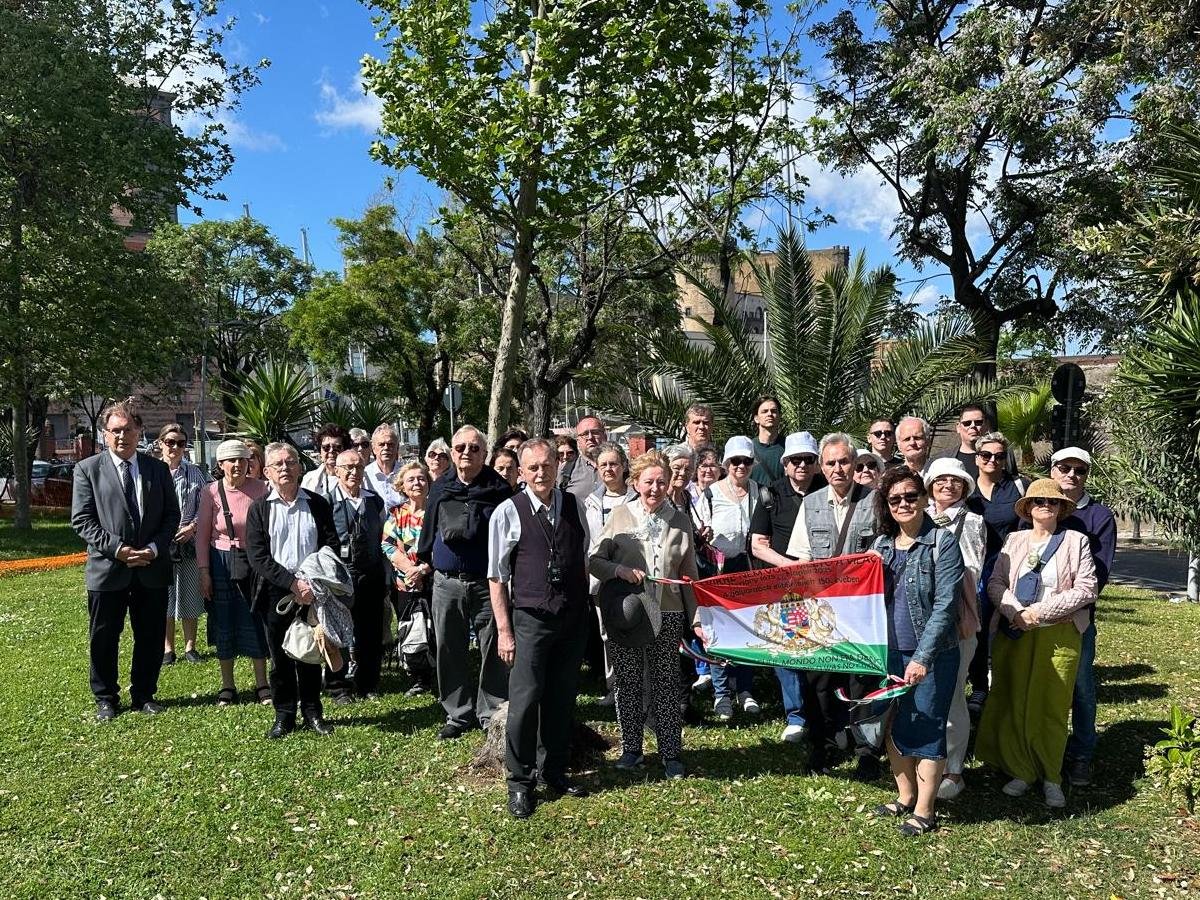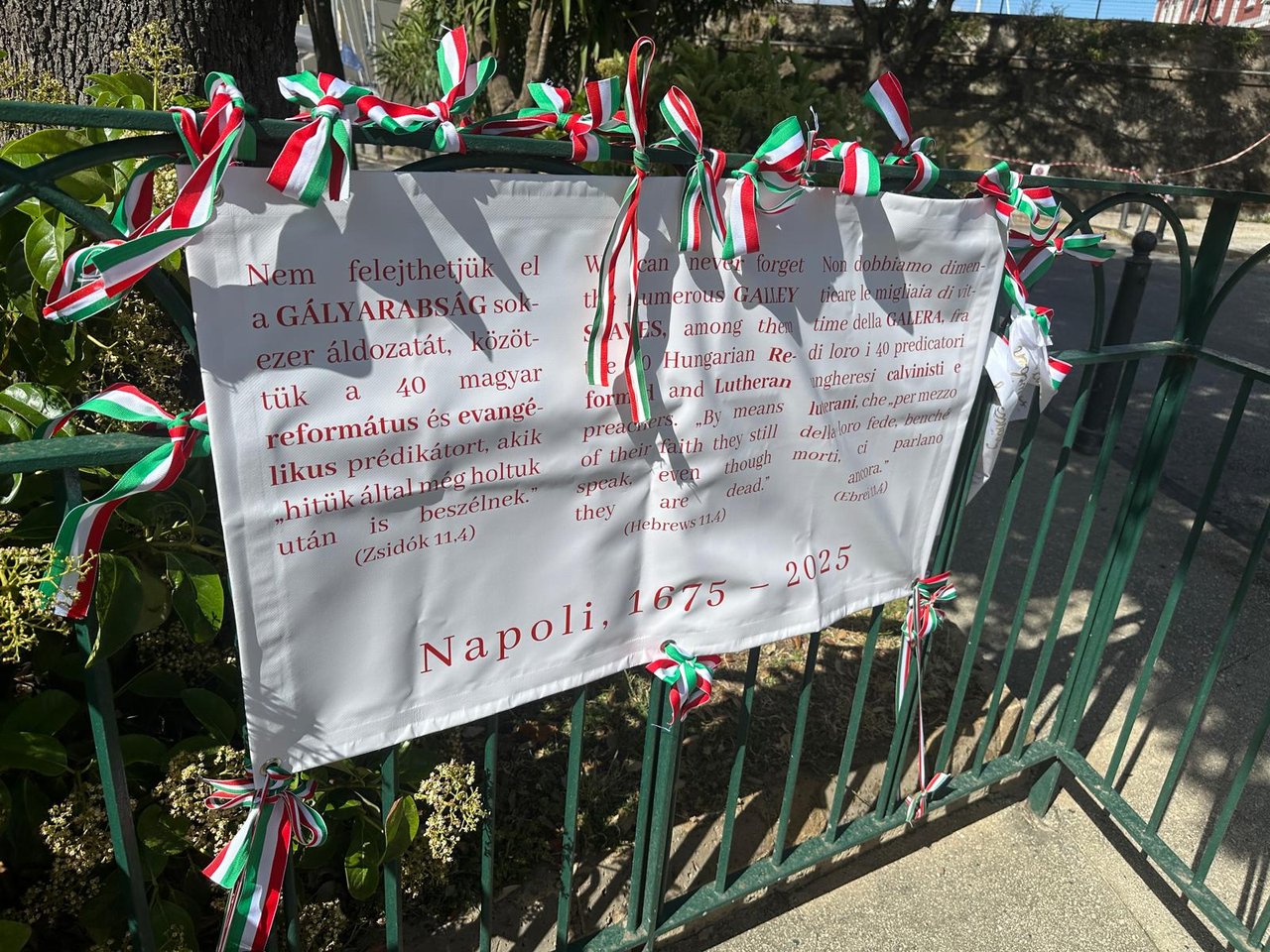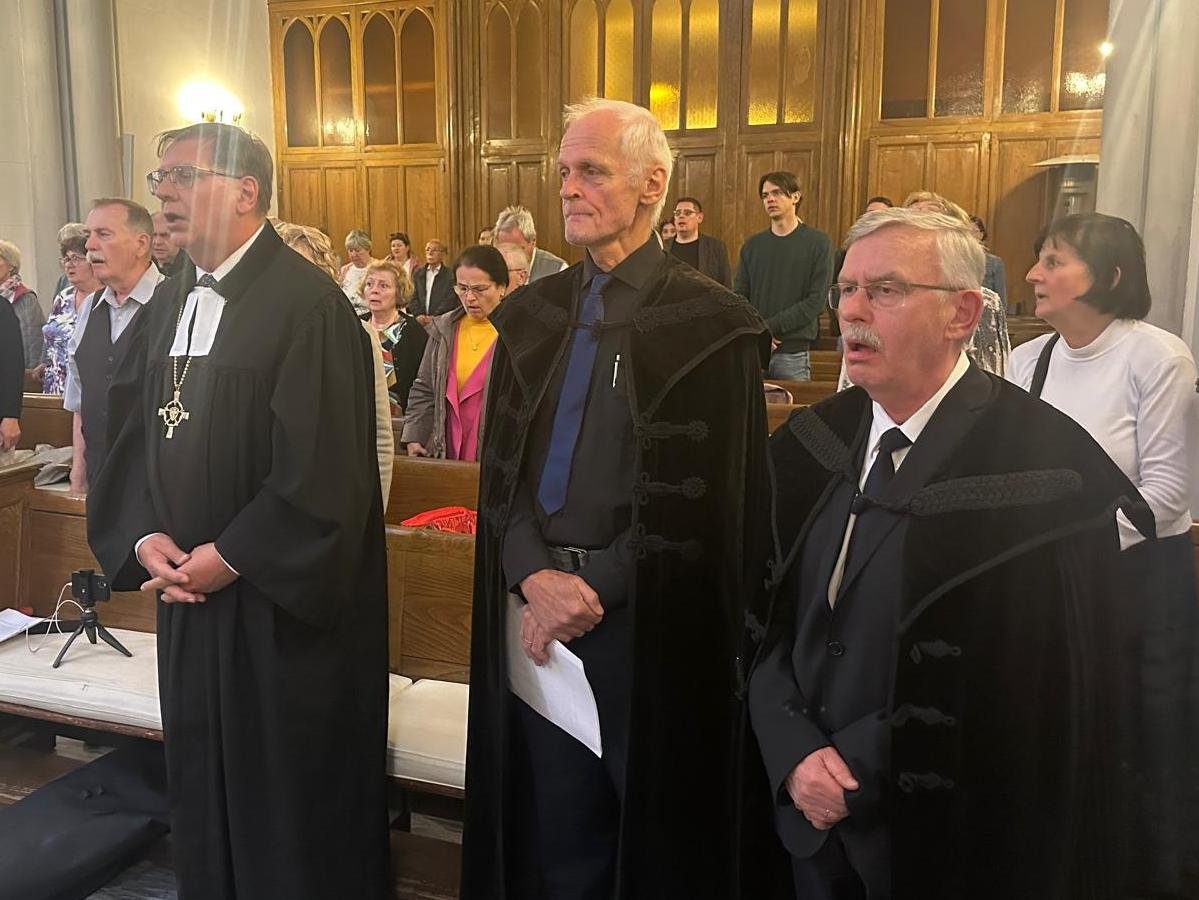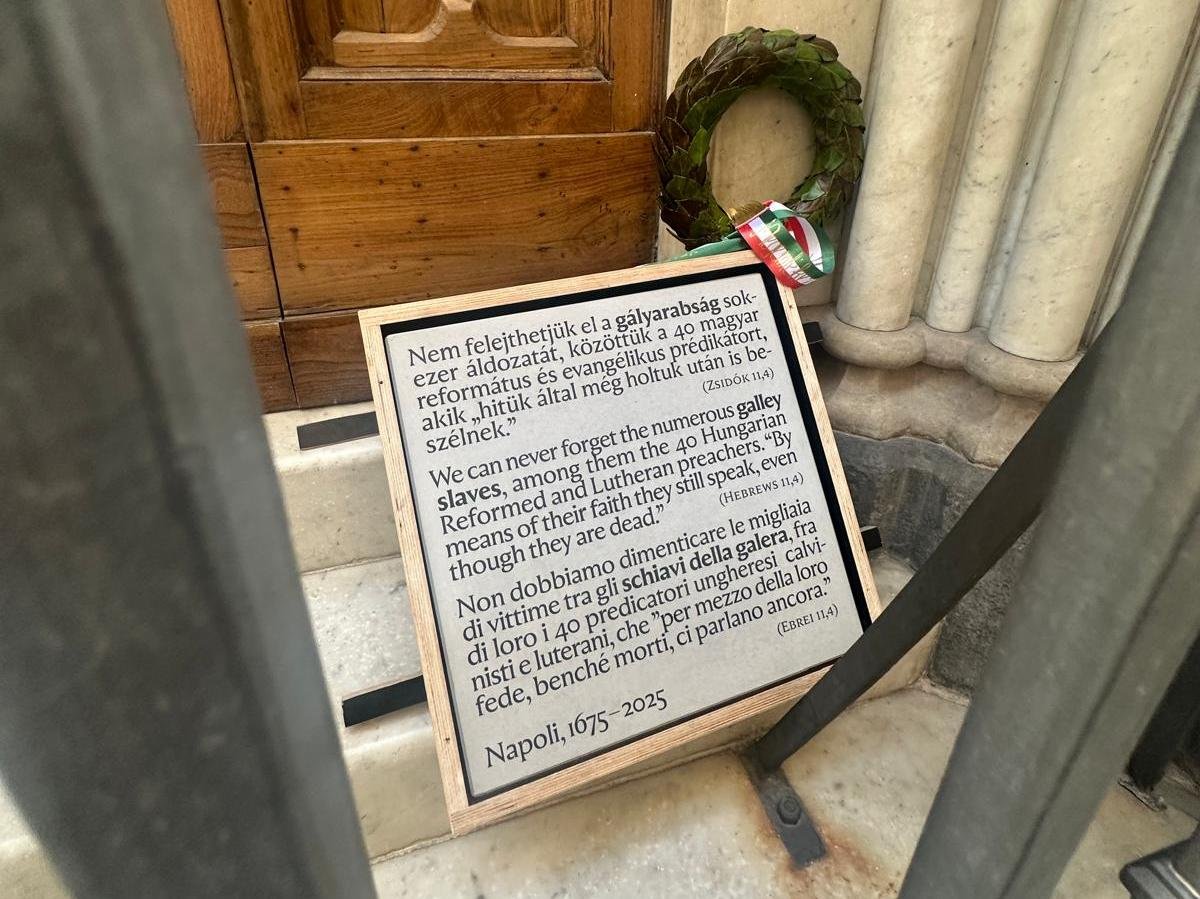Three hundred and fifty years ago, thirty Hungarian Protestant preachers were sold into slavery in the port of Naples. Now, centuries later, Hungarian pilgrims commemorated them in the same place. The story of the galley slaves is part of the public consciousness, Reformed identity, and Hungarian literature—and now it has been immortalized in the heart of Naples in the form of a memorial stone. The group of pilgrims from Naples discovered the legacy of their religious ancestors up close.
May 8, 1675
In the port of Naples, the commanders of warships inspect the condition of the newly arrived prisoners. The prisoners are ragged and broken, barely alive. They were driven from the Carpathians to this place, suffering physical and mental humiliation, so that they could be sold on as cheap labor. There are thirty of them, Hungarian-speaking Protestant preachers. Months ago, they were sentenced to death in Pozsony, but this sentence was "commuted" – and so they became galley slaves.
There has been no war in the Mediterranean region for a long time, so there are no prisoners, and these broken men are taken in. Their shackles are removed and the pastors are taken to the ships, where they are bound to the oars with even heavier chains. They are branded with hot iron and their names are recorded in the register of prisoners, also known as the death register. Galley slavery is considered a slow but certain death. It is hellish slave labor, involving twenty hours of relentless rowing every day, with their mouths gagged so they cannot cry out, kept starving and under constant supervision. This is what awaits the Hungarian preachers: their only "crime" was that they did not renounce their Reformed faith.

Hungarian pilgrims in Naples
May 8, 2025
We are standing in one of the squares of the Molosiglio Gardens in Naples, right next to a friendly harbor. Instead of the galleys and merchant ships of yesteryear, motorboats and sailboats bob on the water. Under the shade of cedar trees and palm trees, in this peaceful corner of the coast, a group of Hungarian pilgrims gathered to commemorate the Protestant ministers who were sold into slavery from this port exactly 350 years ago. Those present can personally relate to the well-known story. One family came from Miskolc and told us that two of the preachers who were deported had served in their congregation. Mária remembers well that fifty years ago she herself sang at a concert in memory of the galley slaves held at the Reformed College in Debrecen. János considers this historical event particularly important in light of the fate of the Hungarian people. Several members of the group have already taken part in similar European pilgrimages, following in the footsteps of Luther or the Apostle Paul. One member of the group has even retraced the entire route taken by the galley slaves (Bratislava–Trieste–Pescara–Naples) from start to finish, probably the first person in the world to do so.
The former prisoners were Reformed and Lutheran ministers, and today's commemorative community is also ecumenical: Lutherans, Reformed, Roman Catholics, and Jews gather in the park next to the port to remember them. Lutheran Bishop Tamás Fabiny and retired Reformed pastor Péter Kardos jointly place the pilgrimage banner in the park, which is decorated with ribbons by the faithful.

"The galley slaves are crown witnesses for us whenever we have to defend the right of Hungarian Protestantism to exist. They represented two different denominations and spoke three different languages, yet it was here that true brotherhood between Hungarian Lutherans and Reformed Christians was first realized," said Gábor Vladár, professor of theology and president of the College of Doctors of the Reformed Church in Hungary, at a commemorative ceremony held at the Lutheran church in Naples. The retired pastor explained that martyrdom is essentially ecumenical, as unwavering adherence to the gospel and suffering together for Christ have always united those who have suffered Christian persecution. "Whether they were swallowed by the waves of the sea or rest in Hungarian soil, we continue to sing their songs as God's wandering people, as members of the one body of Christ," he added. Tamás Fabiny and Péter Kardos also highlighted the instructive outcome of the galley slavery: the twenty-six pastors who survived the ordeal did not flee to countries that offered them safety, but returned home and continued their ministry

Tamás Fabiny, Lutheran bishop, Péter Kardos reformed minister and Gábor Vladár Gábor reformed minister and professor at the commemorative service in the Lutheran church in Naples
Some of the pilgrims contributed to the commemoration by reciting poems, while others sang songs from their homeland. The group also placed a memorial stone in front of the church, which will later be incorporated into the seaside promenade. For the time being, it can be seen at the Lutheran church, making Naples an official memorial site for Hungarian galley slaves.
The history of the galley slaves is part of the Reformed identity. It is included in the seventh-grade religious education curriculum, and many people remember György Moldova's best-selling book, Negyven prédikátor (Forty Preachers). The prisoners' memoirs are also known from archival sources. There are also memorial sites and monuments: Kővágóörs, Veszprém, Rimaszombat, Mezőörs, Sárvár, and Mencshely are just a few of the places where memorial plaques have been erected. The most significant memorial site is in Debrecen: Pope John Paul II visited the galley slave memorial column in Kálvin Square, where he laid a wreath in 1991 as a sign of religious reconciliation.
To mark the 350th anniversary, retired pastor Péter Kardos organized memorial trips to Bratislava, Veszprém, and Rimaszombat, and in May 2025, to Naples, the site of the sale and liberation of the galley slaves.
A 'Decade of mourning'
In a country divided into three parts, the nobility realized after the Peace of Vasvár (1664) that the absolutist aspirations of the ruler were disadvantageous to them, so they established diplomatic relations with the main enemies of the dynasty, the French king and the Turkish sultan, with the aim of secession. The leaders of the Wesselényi conspiracy, Péter Zrínyi, Ferenc Nádasdy, and Ferenc Frangepán, were finally executed for high treason in 1671, after which the organization was dismantled. This marked the beginning of state-sponsored persecution of Protestants, known as the Decade of Mourning. The negative climax of the period between 1671 and 1781 was the trials in Pozsony, where hundreds of Lutheran and Reformed pastors, teachers, and church leaders were accused and convicted without trial. Those sentenced to death had a choice: either renounce their faith and resign from their positions, or leave the country. Of the hundreds who were tried, forty-five Reformed preachers and teachers accepted the death penalty. The pastors who remained steadfast to the end were tortured in prison and then marched on foot to the port of Naples.

The memorial stone will be placed on the seaside promenade in Naples
Even before the sentence was carried out, the condemned began corresponding with each other to mobilize their network of contacts and defend their rights. Thanks to this, news of their plight reached foreign countries. A fundraiser was organized in Switzerland to secure their release, but the money never reached its destination. Through the intervention of German pastor and physician Nicolas Zaffius, judges, scientists, and teachers also learned of the fate of the Hungarian preachers. Finally, thanks to Dutch admiral Michiel de Ruyter, the 26 preachers who were still alive regained their freedom on February 11, 1676.
"By means of their faith they still speak even though they are dead"
The 8th of May marked the 350th anniversary of the arrival of the Reformed and Lutheran pastors and preachers in the city of Naples, condemned by a special court in Pozsony (Pressburg, today Bratislava), sold as galley slaves.